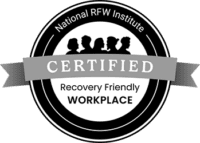The New Patient Engagement Model: Changing – and Improving – the Way We Do Business
Change is Coming to Traditional Business Models, Whether We Like it or Not
Accelerating changes in the global economy are creating extreme pressures on business leaders to respond with improved strategic plans and actions of their own. These improvements imply changes in the fundamental models around which their businesses are designed and how they operate. Thus, today and in the future, business leaders will be compelled to change – in some cases, radically – their business models, financial models, and virtually every other element of their strategic operating plans, policies, and supporting systems. The changes leaders make may be minor, but many are being forced to make significant, sweeping changes to the way they do business on a day-to-day basis.
Business model changes of such magnitude can be daunting. While the external events driving the need for change may be apparent to many, the best direction(s) to take are not. Business leaders are generally reluctant to effect changes that may “upset the apple cart,” not wanting to risk losing customers, profits, market share, or brand credibility. Nonetheless, major shifts are taking place in core aspects of the business environment, including pressures on economic liquidity, regulatory complexity, global competition, and disruptive technologies, just to name a few. And these impact all of us – no matter what business we may be in.
We Need to Respond to External Pressures Strategically to Increase Healthcare Engagement
Thankfully, we have choices and new insights to help guide us in the ways we respond to these continuing external pressures. Changing various aspects of our business model – how we drive the fundamental processes that both create and deliver value to our customers – is an obligation we all must face. But what does it mean to change your business model? How does one approach such a goal with intelligence and responsible oversight? The answer to this question should start with a fresh and comprehensive look at the various dimensions within which you are currently doing business today. The changes that you pursue should acknowledge that for real and effective change to occur successfully, you need to challenge conventional wisdom. This begins by questioning assumptions that you may have been making for long periods of time, and discovering new and more valuable alternatives to the basic choices you’ll make.
In the following example, I will address the changes that are currently taking place in one healthcare scenario, in this case focusing on a particular healthcare provider and its pursuit of a crucially important business model change. This story describes how one hospital is changing the way it engages the highest priority stakeholder in its business landscape – the patient.
Challenging the Conventional Patient Engagement Model – in Several Dimensions
To get a comprehensive view of the dynamics around patient engagement, we need to think about the business model in different dimensions. One strategic framework1 for doing this separates these dimensions into six basic categories:
- MEANING – what is being done, and what value needs to be created; but…what else should be considered to create new value and deliver it effectively?
- PERSON – who is being impacted, and who needs to be involved; who else should be part of this process, on both the provider and the patient sides of the equation?
- TIME – when is engagement happening now, and which events are driving the timing of patient engagement; when else might it be important to engage patients?
- PLACE – where is the engagement taking place currently, and where are all the players normally located; but…where else can the engagement take place, that might maximize value and safety?
- METHOD – how are providers engaging patients, by what means and assets; but how else could the provider team accomplish this, that would deliver even more value than before?
- PURPOSE – why are we engaging patients in the first place? What is the rationale for increasing engagement? What’s in it for them, and for us, the provider? Why else might it be important to make these changes?
The above framework is only a portion of the inquiry that must be explicitly carried out by your business leadership, but this is the start of a comprehensive framework. Notice that each of the questions asked (what, who, when, where, how, and why) come from the “six universal questions.” Including all of these – as well as going beyond conventional wisdom and asking…else in each case – helps reduce the possibility of missing any major areas of change that might need conscious consideration; it helps reduce the potential that you’ll have blind-spots in your strategic business model change effort.
Changing the Patient Engagement Business Model
For this healthcare example, let’s address each of these dimensions one at a time, to understand how changing the business model – by way of explicit inquiry into various assumptions – can lead to profound improvements in the overall process. We’ll start with why:
- Why change patient engagement? Research has shown that a more engaged patient is a healthier patient. Engaged patients tend to be more adherent with their medications and regimens, with their choices in diet and exercise, and overall more pro-active in their lifestyle that affects their total health and wellness. On the other hand, changes in the regulatory landscape mandate that improvements be made in health outcomes; hospitals risk fines and loss of income for poor results.
- What can be changed to create new value? Primarily education and information for the patient are among the most important elements for improvement; and not just more, but more precise and relevant information. Beyond this, motivation is a powerful tool that can be used in the patient engagement process, to help persuade and inspire improved patient behaviors.
- Who should be involved in the process? On the provider side, it needs to be more than just the doctor; physicians are overburdened with responsibilities for the majority of patient interaction. Nurses, health coaches, call center staff, and even automated systems can more cost-effectively handle much of what needs to be communicated. On the patient side, their friends and/or family caregivers should also be actively brought into the engagement circle, to help support and monitor the patient’s health and well-being, ongoing.
- When should patient engagement take place? Unfortunately, most providers only engage the patient after he or she has become sick or injured, which puts them in a re-active mode regarding the patient’s health. If individuals could be engaged long before a health incident takes place, then this puts both patient and provider in more of a pro-active and pre-emptive posture, to improve health overall. Engaging people ahead of time also improves the chances that this same person will choose that particular provider for their health services, which improves the economics of their operation. And looking not just before, but also after, treatment is provided, follow-up communications can vastly improve outcomes and reduce readmissions.
- Where can engagement take place? The most expensive, and often least effective, place to provide the important engagement process is at the hospital itself. Patients, in their preferred lifestyle, are anywhere else but the doctor’s office, clinic, or emergency room. They want to be at work, at home, with their families, or enjoying other activities. Providers must be able to engage them in their lifestyle, wherever else that might be.
- How can healthcare providers better engage patients? Because of the disruptive technology trends afforded by mobile communication platforms and devices, an extremely powerful, flexible, and simple method now exists that providers need to take advantage of. Mobile phones and tablets have quickly become a ubiquitous tool that almost everyone uses, seemingly all the time, everywhere they are, and for a variety of reasons. Leveraging such a platform can be an extraordinarily effective means of accomplishing the goals of the healthcare organization, as well as the creation and delivery of new value for the individual patient.
Effecting Change Intelligently Through Mobile Healthcare
Approaching a business model change in the way that we’ve introduced here becomes significantly more intelligent – in terms of both optimizing results and reducing risks – by leveraging the power of the mobile platform. In this way, what may be considered a “disruptive technology” for some is actually a powerfully enabling technology for healthcare. The mobile assets lend themselves very well to both the eventual method for delivering services to patients, but also in the important process of designing and developing what that method should be in the interim. The mobile platform is used for both production and the experimentation needed throughout the change effort itself.
This is all part of a rapidly growing trend in business that’s often referred to as Lean Methods (not to be confused with “Lean Six Sigma,” etc.). Lean is a more intelligent way to manage change on the scale that external events are forcing us all to consider. It adds two vital elements to what has conventionally been conducted via just “trial-and-error” style experimentation. Lean provides both the strategic insight for executing effective changes at the right initial scale, and then the important learning from constant, iterative feedback from customers (which further drives strategic insight). We call this new, more intelligent approach to business model innovation “STEP” (for Strategy, Trial, Error, Perception), a thinking and planning cycle that represents an innovative mindset for business leaders to manage the changes that we’ll all need to address, sooner than later.
Notes:
This post was authored by Charlie Garland, President and Founder of The Innovation Outlet. To find out more about how to get PLUGGED IN to innovation, visit TheInnovationCube.com







Find Us Online